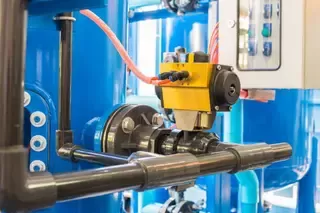Notifications

6 minutes, 22 seconds
-34 Views 0 Comments 0 Likes 0 Reviews

As a leading control valve manufacturer in China, we provide high-performance valves and control actuators engineered to meet the diverse needs of industrial applications.
Control valves are vital components in fluid systems, precisely regulating flow, pressure, and temperature across industries including oil and gas, chemical processing, power generation, and water treatment. Given their critical role, ensuring control valve reliability and longevity is essential to prevent unplanned downtime, safety hazards, and costly repairs.
While designed for durability, control valves inevitably endure wear and tear due to harsh environments and continuous operation. Many common issues, however, can be prevented or mitigated through proactive maintenance and smart operational practices. This article explores typical control valve failures, practical tips to extend valve lifespan, and maintenance strategies that preserve optimal performance and efficiency.
Internal Leakage
Internal leakage occurs when the valve fails to fully close, allowing fluid to pass through the seat even in the closed position. This leakage is often difficult to detect externally but can degrade system performance and pose safety risks.
Typical Causes:
Improper actuator setup or positioner calibration
Worn seals, seats, or internal components
Incorrect Distributed Control System (DCS) configurations
Debris lodged in sealing surfaces
Solutions:
Regular inspection and skilled valve disassembly are necessary to identify and replace damaged parts. Proper actuator calibration and ongoing performance monitoring help prevent recurrence.
External Leakage
External leakage involves fluid escaping from the valve body or bonnet, typically visible or inferred from pressure drops.
Common Causes:
Deteriorated packing or seals
Incompatible materials for the fluid media
Thermal cycling or vibration-induced wear
Loose bolts or structural deformation
Solutions:
Replace worn packing and gaskets, verify material compatibility, tighten fasteners, and conduct vibration analysis to prevent future leaks.
Sticking Valve
A sticking valve responds sluggishly or fails to move, compromising control accuracy.
Possible Causes:
Over-tightened packing increasing friction
Corrosion on stem, spool, or internals
Accumulated debris inside the valve
Solutions:
Disassemble and clean valve internals, lubricate moving parts, and adhere to correct torque specifications during assembly. Upstream filtration can reduce contamination.
Operate Valves at Wide Openings Initially
Erosion typically occurs at flow-restricting surfaces near the seat or plug. Starting operation with the valve largely open (around 90%) localizes initial wear to the plug head. Over time, gradually closing the valve distributes wear more evenly, potentially extending valve life by 1 to 5 times compared to operating primarily at mid or low openings.
Reduce Valve Resistance Ratio
Lowering pressure drop (resistance) across the valve reduces internal stress and erosion. This can be achieved by increasing pressure losses elsewhere in the system, encouraging the valve to operate at larger openings.
Methods Include:
Installing orifice plates downstream
Partially closing manual isolation valves to balance flow
Selecting valves designed for wider opening operation
These steps reduce cavitation and erosion risks.
Downsize Valves to Increase Operating Range
Oversized valves tend to operate at small openings, causing unstable control and concentrated wear. Downsizing the valve or using internal trims with lower flow coefficients promotes operation at larger openings, improving flow stability and longevity.
Redirect Damage to Less Critical Areas
Erosion can be managed by shifting wear from critical sealing surfaces to sacrificial or less critical parts through flow adjustments or internal trim modifications. Protecting seats and plugs extends valve life.
Reverse Flow Direction (If Permitted)
Choosing a "flow-to-close" direction over "flow-to-open" can protect sealing surfaces by shifting erosion away from the seat, preserving critical components.
Passive Maintenance (Reactive)
Repairs performed after failure can lead to unplanned downtime. Use only as a backup or emergency measure.
Preventive Maintenance
Scheduled cleaning, inspection, and minor adjustments improve reliability.
Typical Tasks:
Cleaning internals and removing debris
Flushing pipelines regularly
Inspecting packing and seals
Lubricating stems and moving parts
Checking fasteners and structural integrity
Minimizing vibration and installation stress
Predictive Maintenance
Advanced diagnostics and control systems monitor valve health, predicting failures before they occur.
Tools and Techniques:
Smart positioners and control modules
Vibration and thermal sensors
Acoustic emission leak detection
Asset management software integration
Predictive maintenance optimizes inspections and maximizes uptime.
Control valve longevity depends on smart operation, informed design choices, and diligent maintenance. Understanding failure modes, reducing wear proactively, and embracing predictive technologies enable plants to maintain reliable valve performance over time.
Whether handling steam, gas, water, or corrosive fluids, applying these strategies improves valve lifespan, enhances system efficiency, reduces downtime, and lowers overall operating costs.
Key Takeaway: Control valves are long-term investments. Foresight, precision, and proactive care ensure they deliver consistent, efficient performance for years.Know more about Google SEO Directory

